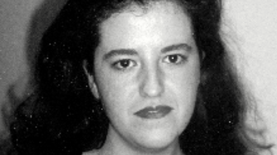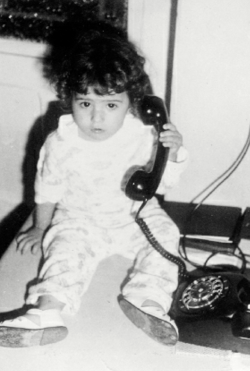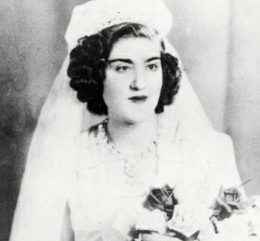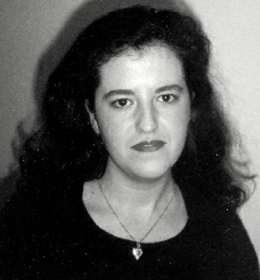
Reincarnation research pioneer Ian Stevenson wrote that out of all children whose reincarnation cases he studied, Suzanne Ghanem of Lebanon recalled the greatest number of proper names of people she had known in her previous life. She remembered many other details, including a phone number that was almost correct.
Case Sources
Despite the strength of this reincarnation case and his plans to publish it in the future,1 Ian Stevenson never published a full report on it but only mentioned it in two published works: his 2001 book intended for popular reading, Children Who Remember Past Lives, and his most voluminous work, Reincarnation and Biology, published in 1997. The lengthiest published description of the case is in a book published in 1999 by journalist Tom Shroder, who accompanied Stevenson on some of his investigations.
Stevenson’s almost complete report of the case exists in manuscript form,2 kept at the Division of Perceptual Studies (DOPS) of the University of Virginia’s medical school. It adopts Stevenson’s typical format for strong cases, complete with a large table of facts drawn from accounts of Suzanne’s memories and recognitions of people known by her previous incarnation. However, his typical evaluation of reincarnation versus alternate explanations as applied to the case is missing and apparently was never written. (Access to the manuscript was made available to the Psi Encyclopedia through the kind courtesy of Jim B Tucker at DOPS.)
It is not known why Stevenson never published the case, but as it was grouped with other miscellaneous case reports apparently intended for a future volume in his ‘Cases of the Reincarnation Type’ book series,3 Tucker speculates that either Stevenson wanted to add more cases to the book before submitting it for publication, or other projects repeatedly took precedence.4
As the previous incarnation’s family was prominent in Lebanon, Stevenson took pains to use aliases in his writings on the case. In the unpublished manuscript and both published works in which he mentions it, the previous incarnation is named as Saada Hatoum, while in Shroder’s work she is named as Hanan Mansour and different names are also used for the past-life associates. In this article, the names used in Stevenson’s writings are used.
Saada Hatoum
Saada Hatoum was born on 6 June 1932 in Kfarsalwan, Lebanon, about 25 kilometres east of Beirut, to Asaad and Zaher Hatoum. At age six she suffered a bout of rheumatic fever. At twenty she married police officer Halim Hautoum. She gave birth to a daughter, Leila, about a year later, and three years after that a second daughter, Ghada. Despite declining health, she bore a son, Nabil, in 1962, and during that same year was diagnosed with mitral valve disease, which can sometimes be traced to rheumatic fever. Aware she had a likely terminal illness, she began to tell others she intended to reincarnate and in her next life remember and speak of her life as Saada.
An evaluation in England in 1965 showed that she had both types of mitral valve disease, and in 1969 she suffered a complication in the form of a minor stroke. She developed blue areas on her legs, resembling bruises, which would last a day or two and were worst when she was tired or had been standing for an extended period. Stevenson speculated that the discolourations were caused by reduced blood-clotting time due to medications and pressure on the veins.
During the 1960s, Saada suffered two severe bereavements, as her brother Mazid, a nationally-renowned aviator, was killed in an aeroplane crash in 1963 and her father Asaad died in 1969.
In 1970, Saada travelled to visit Leila in Venezuela, after which her illness worsened again. Halim told Stevenson that, at about this time, ‘She told him she was going to be reincarnated and have lots to say about her previous life.’5 With the approval of two of her brothers who were physicians, she travelled to Richmond, Virginia, USA, for evaluation and treatment, and agreed to undergo heart surgery that she most likely would not survive. Prior to the operation, she gave her brother who was with her directions on the division of her jewellery, bequeathing a ring to one daughter and a bracelet to the other.
More than anything, however, Saada wanted to see her eldest daughter Leila one last time. Leila could not come, having lost her passport. Shortly before Saada’s death on 11 March 1972, her brother attempted to call Leila in Venezuela, but Saada died before he could get through. Her last words were ‘Leila, Leila’.
According to Halim, Saada was affectionate, devoted as a wife and intensely loving as a mother. She was a pious devotee of the Druze faith, had a good memory, and was in the habit of pulling her skirt down below her knees.
Suzanne Ghanem
Suzanne was born on 21 March 1972 – ten days after Saada’s death – in Choueifate, a suburb of Beirut, to paint supplies store manager Shaheen Ghanem and his wife Munira, who were of the Druze religion.6 She began talking extremely early, and her first words were ‘Awo Leila’, which became more clear as ‘Hello, Leila’ as she grew. She would grip a telephone receiver while saying it repeatedly.
As Suzanne got older, she told her parents that Leila was her child, and gave her own first name as Saada. When asked for her surname, she said ‘My head is still small. Wait until it is bigger, and I might tell you.’ At about age two, she did indeed give the name Hatoum, and also named Saada’s other children, husband, parents and brothers – providing a total of thirteen names.7 Other statements she made at an early age included ‘My house is larger and prettier than this house,’ and to her father, ‘I love you. You are kind to me, as my father [Asaad] used to be. That is why I accept you’.8
Suzanne’s parents knew that a family named Hatoum lived in Kfarsalwan but they did not know them and did not make the connection until Suzanne overheard a family member mentioning a woman with the same name as Saada’s brother Mazid’s wife. Reminded, she mentioned Mazid and how he had died before she had. Recognizing the name of Mazid Hatoum, the famous deceased pilot who had fatally crashed in 1963, the Ghanems sent a friend of the family to the Hatoums in Kfarsalwan with a list of the names Suzanne had given. Impressed, the Hatoums sent Saada’s sister Atifah to Choueifate to meet Suzanne in 1976. A second connection was made by a neighbour of the Ghanems who knew a Leila Hatoum in Venezuela, and sent her the list of names. Seeing it put Leila in tears. The Hatoums fully accepted Suzanne as the reincarnation of Saada and the two families began exchanging visits.
Investigation
On 25 July 1977, the Beirut news magazine Monday Morning published an article about the case headlined ‘the Reincarnation of Saada Hatoum’. It was seen by Stevenson’s Lebanese assistant and interpreter who informed him, and together they conducted interviews in March 1978, February 1979, January 1980 and late March/early April 1981. In Choueifate, Stevenson interviewed Suzanne, her parents, her brothers and three neighbours; in Beirut he interviewed Majid’s widow, Saada’s widower and Saada’s sister-in-law; and in Kfarsalwan he interviewed Saada’s sister Atifah. Stevenson also acquired Saada’s medical records from the Medical College of Virginia. In late 1997, accompanied by Shroder, he made a follow-up visit to Suzanne, who was now aged 25.
Case Features
Statements
Stevenson stated that Suzanne held the record for most proper names of past-life associates remembered by a subject in his collection of cases. He wrote:
I recorded a (probably incomplete) list of fifty-nine items she had stated about the previous life that she remembered. Her statements included the names of twenty-three members of the family to which she referred and two acquaintances. Moreover, she placed all but one of these persons in their proper relationship to Saada, the woman whose life she remembered.9
According to Suzanne’s father, she was able when little to recite by memory the funeral oration spoken at Majid’s funeral, and it had been tape-recorded, though the tape is lost. Her brother Hassam added:
When she was three or four, she gave my mother a recipe for namoura [a Lebanese dessert], one of [Saada’s] favorite recipes. And before she had learned to read or write, she scribbled a phone number. We tried calling it, but it didn’t work. Later, when we went to [Saada’s] house, we discovered that her phone number had been right, except that she had reversed the last two digits, a two and an eight.10
Stevenson verified the number in the Beirut phone directory.
During one visit with Saada’s daughter Ghada, Suzanne suddenly asked whether her brother had given her and Leila Saada’s jewellery as she had directed. Only her brother and her two daughters knew the details of these bequests.
Stevenson recorded 54 statements that Suzanne made giving recalled facts, of which five are incorrect and six unverified. The verified correct facts include:
- she lived in Kfarsalwan
- her husband Halim could not drive a car
- she had a house in Beirut
- she had a brother named Aflaton who was a doctor and treated people in a place near the Druze temple
- she had a brother named Pythagore who was also a doctor
- her brother Mazid and his wife Noura quarrelled
- she had a brother named Fares who was an agricultural engineer and had a wife named Ida
- the Hatoum’s neighbour Nadia would sit with Saada daily when she was sick
- the house in Kfarsalwan had to be reached by stairs and had a metal frame with grapes in front of it
- she had heart disease
- she went to the United States in an airplane, accompanied by her brother Aristote
- she was operated on but died, at the age of about 40 years
Recognitions
As reported in the Monday Morning article, the Hatoums were initially sceptical of Suzanne’s claims, but she quickly convinced them. She did this in part by recognizing identifying photos in a family album, as witnessed by the reporter:
Suzy picked out all the relatives and named them accurately. ‘This is my brother [Aristote], my brother [no equivalent name], my brother [no equivalent name], my mother … and this is me. I think I’m wearing my black dress here. I recognize the cut. Look how thin I was.’ She paused, and the memory of pain was obvious in her eyes. ‘I was very sick’.11
Stevenson records her having recognized five people in person: Saada’s husband Halim, her son Nabil, her sister Atifah, Atifah’s son Iad, and Nadia, a neighbour of the Hatoums.
Behavioural Signs
Past-life related behaviours were a strong feature of this case from the time Suzanne uttered her first words, ‘Awo Leila’ into a phone receiver.

Fig 1: Picture of Suzanne taken c. 1973 (about one year old).
Stevenson noted that Suzanne’s wish to return to her previous home was so intense that she demanded to be taken there every day. She sometimes had nightmares in which she would hear her children crying. Her own frequent tears over her separation from Saada’s children eased up after she reconnected with the Hatoum family at age five.
However, her tendency to remain fiercely attached to her past-life associates, Stevenson told Shroder, became something of a problem.
She would call [Halim], [Saada’s] husband, three times a day. When she went to see him, she would sit on his lap and rest her head against his chest. He remarried, to a woman who had been [Saada’s] friend, but he was so concerned about Suzanne’s reaction that he hid it from her. Eventually, she discovered the truth. She said to him, ‘But you told me you’d never love anyone but me.’ I don’t think [Halim] ever quite admitted to saying that to [Saada]. The closest he came was telling me, ‘Well, I may have said something similar’.12
Halim’s second wife was the neighbour Nadia, and Suzanne got angry with Saada’s son Nabil for calling her ‘mother’, saying it was wrong because she was not his mother, and insisting he called her ‘aunty’ instead.
Adult-like behaviours are often found in children who remember past lives. Suzanne’s included wearing long dresses, putting on makeup, objecting to furniture re-arrangements and certain of Saada’s belongings that were missing in the Hatoum house, and to not being congratulated as the grandmother when Saada’s daughters had children. She also preferred to be with adults more than other children, and refused to attend school unless she could be in a teaching role.
Stevenson noted that when Suzanne gave her mother the namoura recipe, she used the word carboni for baking powder, as is used in Kfarsalwan, rather than carbona, as is used in Choueifate. According to her mother, Suzanne knew how to thread a needle and to sew without being taught, though Stevenson notes she might have observed her mother doing it.
Physical Signs
Facial resemblance is by no means considered primary evidence by academic reincarnation researchers as it is too easily explained by coincidence or, in the case of same-family cases, heredity. It also is sometimes not present at all in a reincarnation case.
However, in some cases in which there is no kinship between the subject and the previous incarnation, facial resemblance is striking nonetheless. In Reincarnation and Biology, Stevenson placed Suzanne Ghanem’s case in the section ‘Facial Correspondences with Indescribable Features’, writing: ‘Persons who had known Saada and who had seen Suzanne said that there was a strong facial resemblance between them, and I believe this myself,’ adding that the resemblance is chiefly in the mouth and chin.13


Fig 2: Saada Hatoum on the day of her wedding, age twenty.
Fig 3: Suzanne Ghanem in 1998, age 25.
Another physical sign that Stevenson observed was blue spots on Suzanne’s legs similar to those Saada had had. For Suzanne, these would take ten days to disappear. At age nine she was still getting them every two to three months, lasting two to three weeks.
Saada displayed one behaviour related to Saada’s physical state: she complained of a weak heart so frequently that her parents had her examined by a doctor, who determined it was normal.
Announcing Dream
Announcing dreams, in which a spirit apparently visits the dreamer (usually the mother-to-be) to say he or she is going to reincarnate into the dreamer’s family, are common in some reincarnationist cultures but extremely rare among Druze, in keeping with the Druze belief that reincarnation happens instantly upon death. Despite this, Suzanne’s mother Munira had one about three or four days prior to Suzanne’s birth. Munira told Stevenson, ‘I dreamed I was going to have a baby girl. I met a woman and I kissed and hugged her. She said, “I am going to come to you.” The woman was about forty’. Later when Munira saw a picture of Saada, she said, ‘I thought it looked like the woman in my dream’.14
Later Development
By age eight, Suzanne was at the top of her class and still talking about her past life daily, though her mother was discouraging her, feeling that her past life was distracting her from her studies.15 She was now calling Halim only every three or four days.
At age 25, asked whether she still remembered her past life, Suzanne said ‘I don’t remember incidents, but the feelings are still there’. She had last seen Halim four years before, but still called him about once a week, and said she had forgiven him for remarrying.16
She told a surprising story of feeling a deep connection with a young man who approached her in Kfarsalwan. ‘He recognized me, but not as Suzanne. He recognized me as [Saada]. He said he was [Majid, her brother, the famed aviator] reborn. He remembered more than I remembered. His family had suppressed his claims, so maybe his memories stayed fresher in his mind. But he hugged and kissed me. I cried’.17
Asked if she thought remembering a past life is a good thing, Suzanne answered, ‘Yes, it is a good thing. My previous family is relieved to know I am still here, and I am relieved to have seen my previous family again’.18
Analysis
In a discussion on the characteristics of people who are most likely to remember past lives, Stevenson posits unusually good memory generally, giving two contrasting cases as examples. One is a Lebanese boy, Said Zahr, whose past-life memories were oddly few; the son of his previous incarnation noted that his father had had a very bad memory. The other was Suzanne Ghanem; Stevenson wrote: ‘I inquired about the memory of Saada … and learned that she was recognized in her family as having had an unusually good memory, especially for the names of people’.19
Stevenson gave the Suzanne Ghanem case as an example of an international reincarnation case in which the previous incarnation died far away from their home nation or region, but returned there in their next life, suggesting purposeful travel during the intermission.20 This could be seen as a confirmation of the Druze belief that a Druze always reincarnates as a Druze21 (and by extension into a Druze community), though Stevenson uses non-Druze cases also as examples of this phenomenon.
KM Wehrstein
Literature
Shroder, T. (1999). Old Souls: Compelling Evidence from Children Who Remember Past Lives. New York: Simon & Schuster. [Kindle edition.]
Stevenson, I. (1975). Cases of the Reincarnation Type. Volume I: Ten Cases in India. Charlottesville, Virginia, USA: University Press of Virginia.
Stevenson, I. (1977). Cases of the Reincarnation Type. Volume II: Ten Cases in Sri Lanka. Charlottesville, Virginia, USA: University Press of Virginia.
Stevenson, I. (1980). Cases of the Reincarnation Type. Vol. III: Twelve Cases in Lebanon and Turkey. Charlottesville, Virginia, USA: University Press of Virginia.
Stevenson, I. (1983). Cases of the Reincarnation Type. Volume IV: Twelve Cases in Thailand and Burma. Charlottesville, Virginia, USA: University Press of Virginia.
Stevenson, I. (1997). Reincarnation and Biology: A Contribution to the Etiology of Birthmarks and Birth Defects (2 vols). Westport, Connecticut, USA: Praeger.
Stevenson, I. (2001). Children Who Remember Previous Lives: A Question of Reincarnation (rev. ed.). [Originally published in 1987.] Jefferson, North Carolina, USA: McFarland.
Stevenson, I. (n.d.). The case of Suzanne Ghanem. Unpublished manuscript held by the Division of Perceptual Studies, Department of Psychiatry and Neurobehavioral Sciences, University of Virginia School of Medicine, Charlottesville, Virginia, USA..
Endnotes
- 1. Stevenson (1997), 1920.
- 2. Stevenson (n.d.). All information in this article is drawn from this source except where otherwise noted.
- 3. Stevenson had by then published a series of four ‘Cases of the Reincarnation Type’ books. See Stevenson (1975, 1977, 1980, & 1983).
- 4. Personal communication (29 November 2022).
- 5. Shroder (1999), 95.
- 6. Stevenson (1997), 1920.
- 7. Shroder (1999), 95-96.
- 8. Shroder (1999), 96.
- 9. Stevenson (2001), 150.
- 10. Shroder (1999), 100.
- 11. Cited in Shroder (1999), 101.
- 12. Shroder (1999), 97.
- 13. Stevenson (1997), 1920, 1924.
- 14. Shroder (1999), 95.
- 15. Performing well in school is a tendency of children who remember past lives. See here.
- 16. Shroder (1999), 99.
- 17. Shroder (1999), 103.
- 18. Shroder (1999), 100.
- 19. Stevenson (2001), 212-13.
- 20. Stevenson (2001), 242-43.
- 21. Stevenson (1980), 3.

